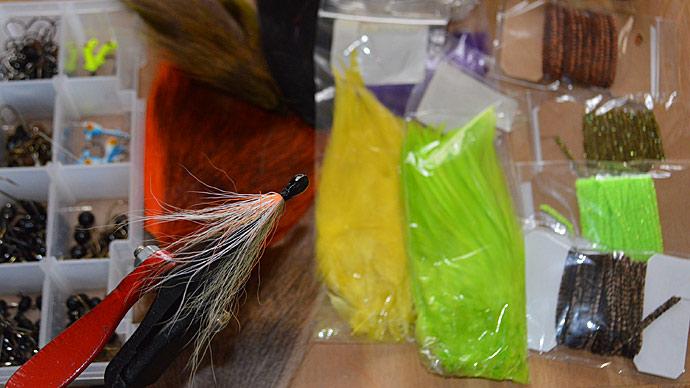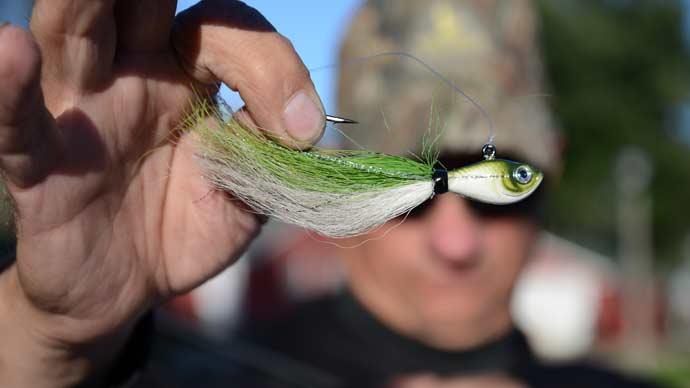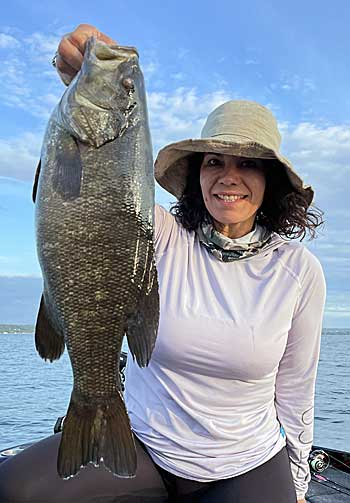
One of the great things about bass fishing is that there are many different ways to catch them. Lures of all types will have a time and place during the season, and there are times when little do-nothing baits like a marabou hair jig are tough to beat. They are exceptional for catching big smallmouth bass in clear water and shining during the pre-spawn, spawn, post-spawn, and summer.
While they have exploded in popularity recently, it was a well-kept secret among some anglers in the northern United States and Canada for many years. That group of anglers has been using these "flies" to catch giant smallmouth bass for decades. Now, they're as popular as ever for anglers fishing for smallmouth bass. Fishing them is unique, fun, and a great way to catch a bunch of fish when the conditions line up.
Little on Action, Big on Attraction
Fishing a marabou hair jig is unusual for bass anglers accustomed to feeling the vibration, resistance, and feel of lures we use. Of course, almost everything we throw has some action we can see and feel as we work the lure, but these little hair jigs do nothing – that's part of the appeal and why they work so well.
The first time fishing them is unusual, and it appears like the bait is doing nothing at all as it slowly swims through the water. That's part of the attraction, and the nonthreatening lure swimming through the water imitates a small leech or baitfish without a care in the world. That's all part of the drawing power. You'll often notice bass tracking the bait for a long distance before deciding it's time to eat it.
Fishing them is simple, and a straight retrieve is usually best. The only variable is adjusting the speed to meet what the fish want that day and to keep it in a specific part of the water column. It's generally a shallow water technique, and keeping the bait in the middle of the water is usually better than fishing it near the surface or along the bottom.
Picking the Right Jig
Several brands make quality hair jigs; one of the most important things is to ensure they are marabou instead of synthetic hair, as marabou tends to look and act more natural in the water as it flows. A quality hook is another thing to consider, as some brands have hooks that are too small or of poor quality that will bend under the strength of a hard-fighting smallmouth.
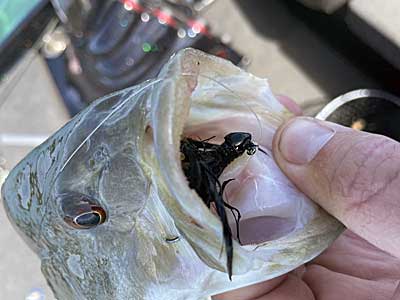
Generally, light jigheads in the 3/32 to 1/8-ounce range are best as they are light enough to be fished slowly and not drag the bottom but heavy enough to cast with standard tackle. Adding a small chunk of a soft plastic stick bait along the shank of the jig's hook will aid in casting distance and also help to make the jig appear a little bulkier in the water to add to the appeal.
For colors, it's hard to beat a solid black color, and this is the most popular choice. It's a natural color that shows up well in clear water and imitates a variety of smallmouth forage. Some anglers opt for brown shades, which can be another good option.
Pre to Post-Spawn
These hair jigs will work just about anytime, but the best chances of really getting into them are when most bass are shallow. It's what makes the pre-spawn, spawn, and post-spawn periods such good times to use them. They work well all summer long as some smallmouth will always stay shallow if the water is warm enough. Even fish that spend much of the day in deeper water will cruise shallow water when looking for food, making the perfect situation for fishing a hair jig.
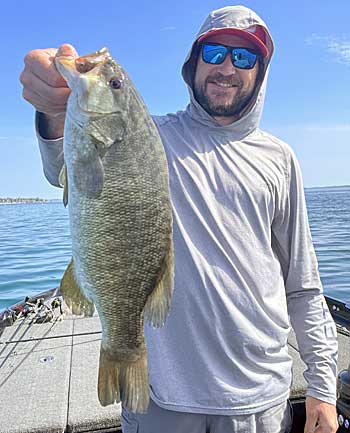
Some of the best places are around isolated targets in shallow water, with rocks being prime areas. Isolated boulders, small rock piles, and even shallow wood are great ambush points for shallow bass and places for fishing hair jigs. The one critical ingredient is clear water. The smallmouth bass is a sight-feeder; having clean water is the only way to follow and then attack your jig.
Rod, Reel, and Line
With baits, this light, one of the most important things to consider is having a rod that can cast them a long way. It's a complete setup and requires a different casting approach to whip these little hair jigs out as far as you can.
For the rod, a 7-foot medium-light spinning rod is light enough to get a reasonable casting distance. In addition, some rod manufacturers have jumped on the popularity of these hair jigs and make specialty rods that are longer and lighter, which help launch these baits even further.
A 2500-sized reel is a good starting point for fishing these little jigs, and selecting the right line to go with it is paramount in getting a reasonable casting distance. A smooth and thin braided line like 10-pound Seaguar Smackdown is an excellent choice for getting long casts with these lightweight baits. The high visibility Flash Green color helps detect subtle bites as you sometimes see your line "jump" before you feel it with your rod. Pair it with a leader of 8-pound Seaguar Gold Label fluorocarbon, and the bait will cast well. Your braided line will be out of sight, and the clear fluorocarbon line will help disguise your presentation.
Fishing small hair jigs is a fun experience, and there's no denying it works. Smallmouth bass especially love the look of a hair jig flowing through the water and will have no problem attacking them in shallow water. So give one a try the next time the conditions align, and you won't be disappointed.


